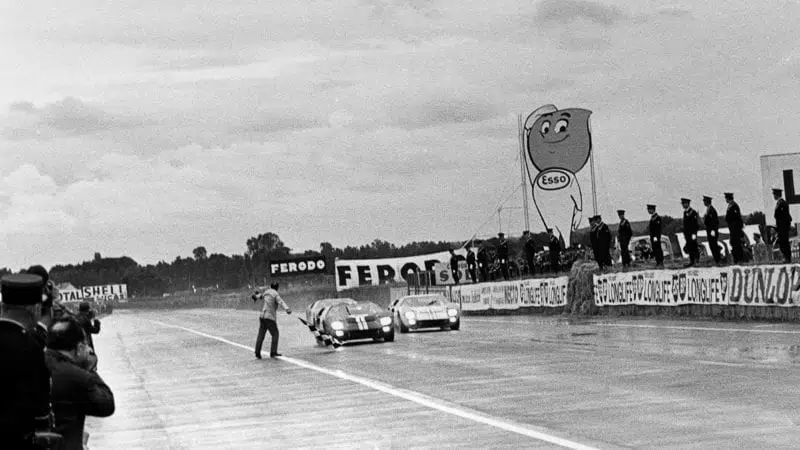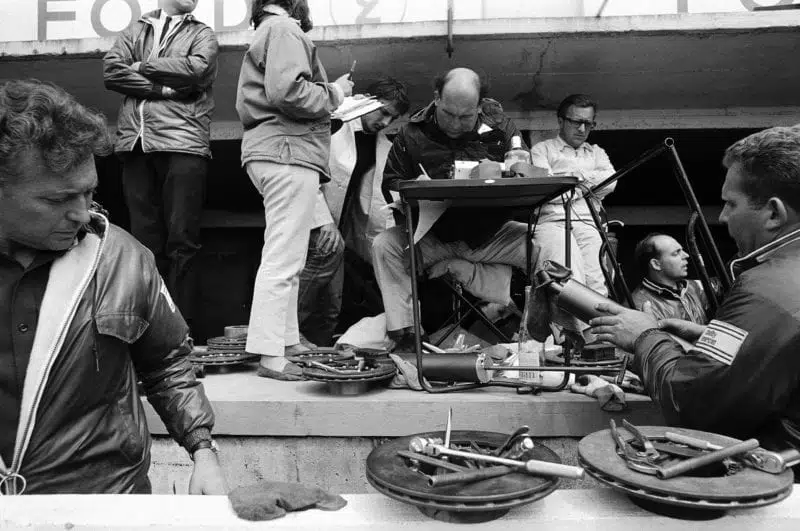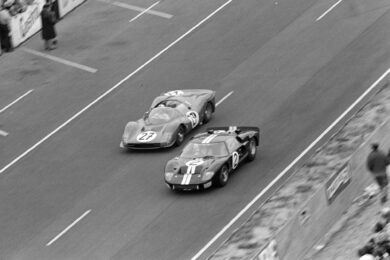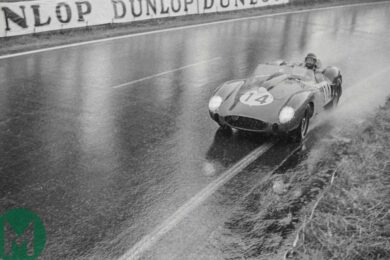As instructed, Ken Miles slowed to let McLaren catch up on the final lap, and for Hutcherson in his and Bucknum’s third Mk II.
As they approached the actual timing line, short of where the flag is thrown, Miles and McLaren seemed to be nearly side by side before Miles inexplicably checked up, allowing McLaren to surge ahead – then Miles pulled forward again.
It’s fair to say that, like the French P.A. announcer, most initially believed Miles had won. He’d led so much of the race and obviously slowed to let McLaren and Hutcherson catch up at the end, and when Hulme climbed aboard, their No. 1 car certainly looked the winner.
Though first back to the podium, the No. 1 car was stopped and officials waved the Amon/McLaren car ahead – as the P.A. announcer now proclaimed them the winners. And so it stood, with an almost uncomfortable McLaren and Amon and a joyous Henry Ford II on the podium, joined only later by Miles and Hulme.
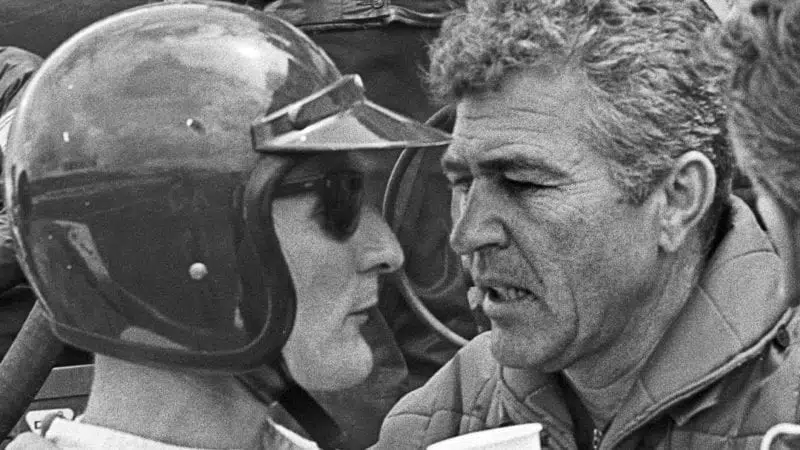
Shelby tells Miles that Ford wants him to engineer a dead-heat victory
The Cahier Collection, Bernard Cahier
[Carroll] Shelby was unequivocal.
“Ken Miles was way ahead of the race. He would have been the only man in history to win Daytona, Sebring and Le Mans. He should have won it.”
Charlie Agapiou, too, remained adamant that his friend was robbed, and pulled no punches as to where the blame lay.
